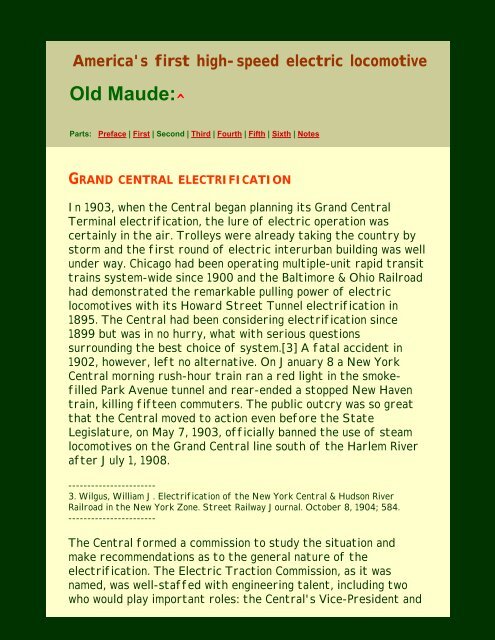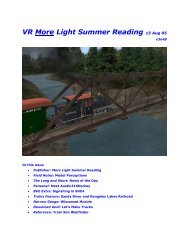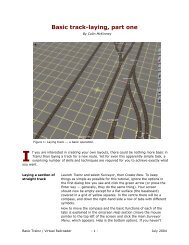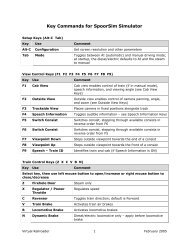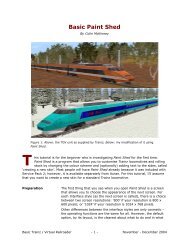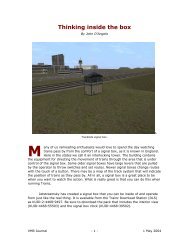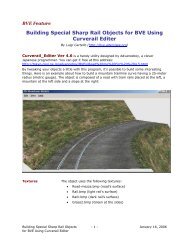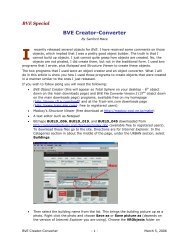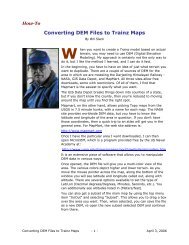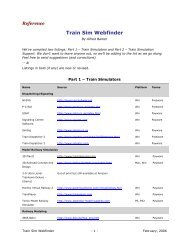Old Maude, Preface - Virtual Railroader
Old Maude, Preface - Virtual Railroader
Old Maude, Preface - Virtual Railroader
You also want an ePaper? Increase the reach of your titles
YUMPU automatically turns print PDFs into web optimized ePapers that Google loves.
America's first high-speed electric locomotive<br />
<strong>Old</strong> <strong>Maude</strong>:^<br />
Parts: <strong>Preface</strong> | First | Second | Third | Fourth | Fifth | Sixth | Notes<br />
GRAND CENTRAL ELECTRIFICATION<br />
In 1903, when the Central began planning its Grand Central<br />
Terminal electrification, the lure of electric operation was<br />
certainly in the air. Trolleys were already taking the country by<br />
storm and the first round of electric interurban building was well<br />
under way. Chicago had been operating multiple-unit rapid transit<br />
trains system-wide since 1900 and the Baltimore & Ohio Railroad<br />
had demonstrated the remarkable pulling power of electric<br />
locomotives with its Howard Street Tunnel electrification in<br />
1895. The Central had been considering electrification since<br />
1899 but was in no hurry, what with serious questions<br />
surrounding the best choice of system.[3] A fatal accident in<br />
1902, however, left no alternative. On January 8 a New York<br />
Central morning rush-hour train ran a red light in the smokefilled<br />
Park Avenue tunnel and rear-ended a stopped New Haven<br />
train, killing fifteen commuters. The public outcry was so great<br />
that the Central moved to action even before the State<br />
Legislature, on May 7, 1903, officially banned the use of steam<br />
locomotives on the Grand Central line south of the Harlem River<br />
after July 1, 1908.<br />
-----------------------<br />
3. Wilgus, William J. Electrification of the New York Central & Hudson River<br />
Railroad in the New York Zone. Street Railway Journal. October 8, 1904; 584.<br />
-----------------------<br />
The Central formed a commission to study the situation and<br />
make recommendations as to the general nature of the<br />
electrification. The Electric Traction Commission, as it was<br />
named, was well-staffed with engineering talent, including two<br />
who would play important roles: the Central's Vice-President and


